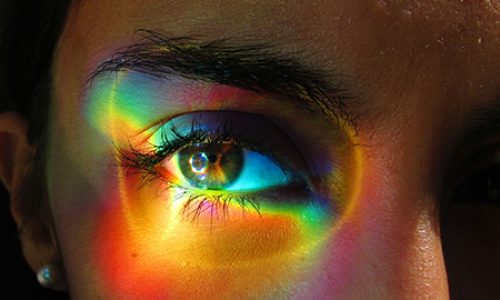Back to School Eye Care and Eyewear Advices
December 2021


Nour Bseiso, Optometrist.
Eye Care Professional
Al-Adan Hospital
Globally, the ongoing coronavirus pandemic has placed surpassing challenges on schools in weighing parent’s needs for safe and effective learning approaches for their children. The normal school environment has not been witnessed since COVID-19, but optometrists can make back-to-school look its best no matter how students attend classes this new school year.
It is commonly overlooked that a vision problem is a contributing factor to the academic difficulties of school-age children. That’s why a back-to-school eye examination should be one of the first things considered since vision is regarded as the way we bring information into our systems and interpret what we consume. Also, a back-to-school eye exam eliminates parents’ concerns that vision and eye health could be interfering with their children obtaining their highest academic performance. Some children are very clever and recognize vision problems by themselves and ask their parents to take them for an eye examination. While there are other children may not tell their parent that they have a vision problem because they may think the way they see is the way everyone sees. In this case parents should take to a routinely eye examination and notice if their child is showing any visible signs of eyestrain.
Vision challenges of online learning
Due to the spreading of the COVID-19 pandemic worldwide, schools are shifting to online learning or hybrid method that leads to a marked increase in the usage of the digital device among children twice as much as before COVID-19 closures for what feels like most of the day. Digital eye strain (DES) is the most common ocular problem associated with prolonged device use; symptoms include dry eyes because of the blink rate decrease, itching, and foreign body sensation, watering, blurring of vision, and headache.2 According to studies, the most digital device used for online classes was smartphones with a short viewing distance because of their small screens, so there is more asthenopia and accommodative problems in children1.
Eyecare professionals can make patients aware of significant considerations to alleviate these concerns encompassing:
- Screen position
The one-two-ten rule (1, 2, 10) describes the distances for digital devices: mobile phones at a distance of one foot; desktops and laptops at a distance of two feet; and televisions at a distance of 10 feet.3
- Appropriate lighting and care should be taken to reduce reflective glare off the monitor
screen
- Correct posture
- Blinking routinely: Children should be encouraged to blink when reading text on screens
- Frequent breaks following the 20/20/20 rule: after every 20 minutes of digital device use, look at a distance of 20 feet for at least 20 seconds 4
- Disengaging before bedtime and having enough sleeping hours: lack of sleep can make them more susceptible to the distractions of allergies and vision
- Spending less time on digital devices
Eye health concerns for personally attending classes
Returning students to in-person classroom settings may encounter unique challenges related to eye health, especially the transmission of COVID-19 through the eyes caused by SARS-CoV-2 which its transmission occurs primarily through respiratory droplets – the reason educational institutions are spacing desks at least 6 feet apart and encouraging the use of face covers – but other modes of transmission have been found, including eye tissue or fluids. For helping to limit the spread of COVID-19, advises against not touching not only the mouth and nose but also the eyes.
Back-to-school eye checks are essential not for making sure that not only have an overall healthy visual function but also that students understand the significance of adhering to good eye health hygiene and are appropriately seeking care when issues do arise, such as red or pink eyes.
Importance of routine children’s eye care
When children’s visual skills aren’t developed, or are poorly developed, learning can become difficult and tiring. This may result in children
- Avoiding reading and other close-up
- Attempt to do the work anyway but with a lowered level of comprehension or
- Experience discomfort, fatigue and short attention
The American Optometric Association recommends the frequency of eye exams varies with the child’s age, ocular and medical history, and other related risk factors, but generally should follow:
- 3-5 years old – Low-risk children should be examined at least once; at-risk children should be examined at least once or as
- 6-18 years old – Low-risk children should be examined before first grade and annually thereafter; At-risk children should be examined before first grade and annually, or as recommended.
Eyewear Tips and Recommendations
Both Parents and children should understand the purpose and the function of the eyeglasses. The child needs to get involved in choosing the frame she/he likes, and that fits well feels comfortable. The more engaged the child in choosing the style of his /her frame, the more they will be excited about their new eyeglasses and therefore more likely to wear them.
Parents should take into considerations the recommendations and advices provided by the eye care providers regarding the spectacles such as about the relationship of the student’s prescription type and strength to the size of the frame. eyewear frames are now available in a variety of metals and plastics in different colors. The nose bridge must fit comfortably—for students with flatter bridges, the frames with individual nose pads that can be adjusted for a custom fit are most practical. The temples should go over and behind the ears enough to provide balanced comfort and keep them firmly planted without sliding down.
The most common lens material recommended at most practices is Hi-Index plastic or Polycarbonate. Both of these materials provide shatter-resistance in the event of an accident or trauma. They are also 40% thinner than the old standard.
In Conclusion
Eye care providers can help make sure that students have all the advantages they can get when they return to school whether online or in person by providing a thorough analysis of their visual system and any options for improvement.
References
- Mohan, A., Sen, , Shah, C., Jain, E., & Jain, S. (2021). Prevalence and risk factor assessment of digital eye strain among children using online e-learning during the COVID-19 pandemic: Digital eye strain among kids (DESK study-1). Indian Journal of Ophthalmology, 69(1), 140.
- Sheppard AL, Wolffsohn Digital eye strain: Prevalence, measurement, and amelioration BMJ Open Ophthalmol. 2018;3:e000146
- Bilton N I Live in the Future and Here is How It Works. 2010 New York Crown Business:1–293
- Misawa T, Yoshino K, Shigeta S. An experimental study on the duration of a single spell of work on VDT (visual display terminal) performance Sangyo Igaku. 1984;26:296–302
- American Optometric (2020, July 15). School’s not Out FOREVER: Why ‘back-to-school’ exams are crucial this year. AOA. from
https://www.aoa.org/news/practice-management/perfect-your-practice/why-back-to-school-eye-exams-are
- Skinner, (2017, July 6). Back to school eye care and Eyewear Tips. Brookside Optometric Group.
Retrieved September 11, 2021, from
https://www.brooksideoptometric.com/education/back-to-school-eye-care-and-eyewear-tips





